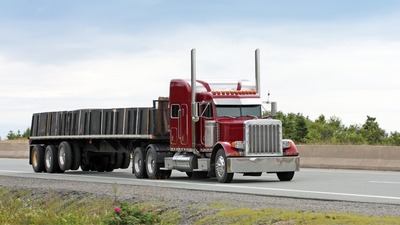When it comes to transporting heavy-duty vehicles, the choice of ramps can be pivotal for both safety and efficiency. Aluminum ramps, known for their lightweight and strong characteristics, are often considered. But how safe are they really? Let's dive into the aspects that make aluminum ramps suitable (or not) for heavy-duty vehicles, ensuring that you make an informed decision.
Why Choose Aluminum?
Exploring the inherent qualities of aluminum that make it desirable for ramp construction, including its strength-to-weight ratio and resistance to corrosion, reveals why it's so popular in various industries. Not only is aluminum rust-proof, but its natural properties allow for the construction of ramps that are both sturdy and easier to maneuver than their steel counterparts.
In addition to being resistant to corrosion, aluminum ramps are surprisingly lightweight, which makes them easy to set up and transport. This feature is particularly beneficial for those who frequently move heavy-duty vehicles from one location to another. Despite their lightness, these ramps boast an impressive strength that can handle the load of large vehicles without buckling under pressure.
Aluminum's flexibility in terms of design also allows for customized solutions that cater to specific load requirements and environmental conditions. This adaptability ensures that aluminum ramps can be crafted to perfectly suit the needs of any heavy-duty vehicle application.
Understanding Load Capacity
The load capacity of a ramp is perhaps the most critical factor to consider when evaluating its suitability for heavy-duty vehicles. Aluminum ramps come with various load ratings, designed to meet the needs of different weights and sizes of machinery. Understanding these ratings is essential to ensure that you choose a ramp that can safely support your vehicle's weight without risk of failure.
It's not just about the weight of the vehicle itself, but also the load it may be carrying. Overestimating the capability of your aluminum ramp can lead to dangerous situations. Therefore, always opt for ramps that offer a higher load capacity than what you currently need to account for any future needs or unexpected weight additions.
Design and Safety Features
The safety of aluminum ramps heavily relies on their design. Features such as serrated rungs or a textured surface improve traction, reducing the risk of slippage during use. The inclusion of side rails offers additional protection by preventing vehicles from accidentally veering off. Moreover, the way a ramp connects to the loading surface is crucial. Secure attachment points prevent the ramp from dislodging under the weight of heavy-duty vehicles, ensuring a stable and safe ascent and descent. Manufacturers often integrate innovative connection designs to enhance this stability, reflecting the importance of both ease of use and safety in ramp construction.
Proper Use and Maintenance
Like any equipment, aluminum ramps require proper usage and maintenance to remain safe over time. Adhering to the manufacturer's guidelines for use and weight limits is essential. Additionally, regular inspections for signs of wear, damage, or corrosion can prevent accidents. Maintenance involves cleaning your ramps regularly to maintain their traction and checking connection points for secure attachment. Store your ramps in a manner that prevents unnecessary exposure to harsh environments, preserving their structural integrity and extending their lifespan.
Real-World Applications and Case Studies
Examining scenarios where aluminum ramps have been successfully used with heavy-duty vehicles can provide valuable insights into their practical application. For instance, in industries such as construction and logistics, aluminum ramps are favored for their balance of strength and portability.
Case studies often highlight how specific features of aluminum ramps, such as custom load capacities or specialized traction surfaces, have contributed to safe and efficient operations in various heavy-duty contexts. These real-world examples serve as testaments to the potential of aluminum ramps when properly selected and used.
FAQs on Aluminum Ramps
One common question is about the longevity of aluminum ramps when used regularly with heavy-duty vehicles. Thanks to aluminum's resistance to corrosion and high strength-to-weight ratio, these ramps can last for many years with adequate care and maintenance, even under frequent use.
Another inquiry often revolves around the best practices for ensuring the safety of aluminum ramps. Ensuring that the ramp you choose is designed for your specific vehicle weight, coupled with routine inspections and adherence to safety guidelines, are key steps in maintaining a safe environment.
Final Thoughts on Aluminum Ramps for Heavy-Duty Vehicles
Concluding, aluminum ramps offer a promise of strength, lightweight, and corrosion resistance, making them an attractive choice for many. However, their safety for heavy-duty vehicle operations largely depends on factors such as the design, load capacity, and proper usage. By adhering to manufacturer guidelines and ensuring the ramps meet the specific needs of your heavy-duty vehicles, aluminum ramps can be a safe and efficient choice.





